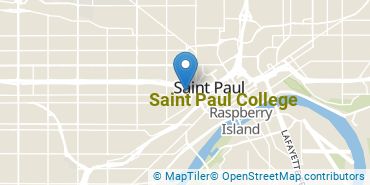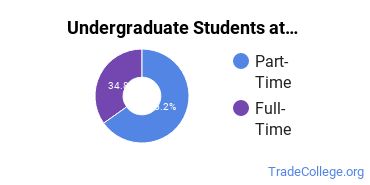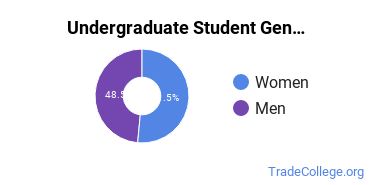Saint Paul College Trade Programs
Saint Paul College is a public institution situated in Saint Paul, Minnesota. The city atmosphere of Saint Paul makes it a great place for students who enjoy having lots of educational and entertainment options.
Featured schools near , edit
Where Is Saint Paul College?

Contact details for Saint Paul College are given below.
| Contact Details | |
|---|---|
| Address: | 235 Marshall Ave, Saint Paul, MN 55102-9808 |
| Phone: | 651-846-1600 |
| Website: | www.saintpaul.edu |
Can I Afford Saint Paul College?
| In State | Out of State | |
|---|---|---|
| Tuition | $5,486 | $5,486 |
| Fees | $832 | $832 |
| Books and Supplies | $1,200 | $1,200 |
Student Loan Debt
Almost 66% of college students who graduated with the class of 2018 took out student loans, but that percentage varies from school to school. At Saint Paul College, approximately 20% of students took out student loans averaging $5,624 a year. That adds up to $22,496 over four years for those students.
Saint Paul College Undergraduate Student Diversity

Gender Diversity
Of the 2,008 full-time undergraduates at Saint Paul College, 48% are male and 52% are female.

Racial-Ethnic Diversity
The racial-ethnic breakdown of Saint Paul College students is as follows.

| Race/Ethnicity | Number of Grads |
|---|---|
| Asian | 383 |
| Black or African American | 623 |
| Hispanic or Latino | 196 |
| White | 637 |
| International Students | 42 |
| Other Races/Ethnicities | 127 |
Saint Paul College Trade School Concentrations
The table below shows the number of awards for each concentration.
References
*The racial-ethnic minorities count is calculated by taking the total number of students and subtracting white students, international students, and students whose race/ethnicity was unknown. This number is then divided by the total number of students at the school to obtain the racial-ethnic minorities percentage.
More about our data sources and methodologies.
Featured Schools
 Request Info
Request Info
|
Southern New Hampshire University You have goals. Southern New Hampshire University can help you get there. Whether you need a bachelor's degree to get into a career or want a master's degree to move up in your current career, SNHU has an online program for you. Find your degree from over 200 online programs. Learn More > |
